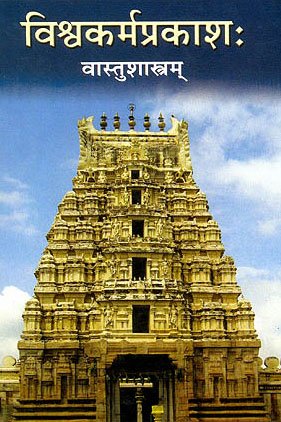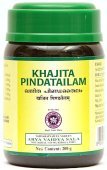Sarjarasa, Sarja-rasa: 11 definitions
Introduction:
Sarjarasa means something in Buddhism, Pali, Hinduism, Sanskrit, Marathi, biology. If you want to know the exact meaning, history, etymology or English translation of this term then check out the descriptions on this page. Add your comment or reference to a book if you want to contribute to this summary article.
In Hinduism
Ayurveda (science of life)
Kalpa (Formulas, Drug prescriptions and other Medicinal preparations)
Source: Shodhganga: Edition translation and critical study of yogasarasamgrahaSarjarasa (सर्जरस) refers to the medicinal plant known as “Vateria indica Linn. (Gum resin)” and is dealt with in the 15th-century Yogasārasaṅgraha (Yogasara-saṅgraha) by Vāsudeva: an unpublished Keralite work representing an Ayurvedic compendium of medicinal recipes. The Yogasārasaṃgraha [mentioning sarjarasa] deals with entire recipes in the route of administration, and thus deals with the knowledge of pharmacy (bhaiṣajya-kalpanā) which is a branch of pharmacology (dravyaguṇa).

Āyurveda (आयुर्वेद, ayurveda) is a branch of Indian science dealing with medicine, herbalism, taxology, anatomy, surgery, alchemy and related topics. Traditional practice of Āyurveda in ancient India dates back to at least the first millenium BC. Literature is commonly written in Sanskrit using various poetic metres.
Vastushastra (architecture)
Source: OpenEdition books: Architectural terms contained in Ajitāgama and RauravāgamaSarjarasa (सर्जरस) refers to “resin of Vatica Robusta § 2.16.”.—(For paragraphs cf. Les enseignements architecturaux de l'Ajitāgama et du Rauravāgama by Bruno Dagens)

Vastushastra (वास्तुशास्त्र, vāstuśāstra) refers to the ancient Indian science (shastra) of architecture (vastu), dealing with topics such architecture, sculpture, town-building, fort building and various other constructions. Vastu also deals with the philosophy of the architectural relation with the cosmic universe.
Shilpashastra (iconography)
Source: Shodhganga: Elements of Art and Architecture in the Trtiyakhanda of the Visnudharmottarapurana (shilpa)Sarjarasa (सर्जरस) refers to the “resinous exudation of the sāla tree” and is used to refine the Canvas or plastered wall, according to the ancient Indian art of Painting (citra), according to the Viṣṇudharmottarapurāṇa, an ancient Sanskrit text which (being encyclopedic in nature) deals with a variety of cultural topics such as arts, architecture, music, grammar and astronomy.—Canvas is a kind of surface on which a painter can draw a picture. In ancient time walls are seen to be plastered with different substances and these were prepared for Painting. [...] The Viṣṇudharmottarapurāṇa states that the coating of the paste should be very smooth, even and finely distributed and the proportion should not be either very thick or thin. It is also mentioned in this book that if the coating is not perfectly set on a wall, it should be smoothened by the paste made with clay, oil and sarjarasa i.e., the resinous exudation of the sāla tree and again the wall should be polished with the constant sprinkle of milk. The Viṣṇudharmottarapurāṇa advices that after plastering the wall, the painter should proceed to start the Painting work.

Shilpashastra (शिल्पशास्त्र, śilpaśāstra) represents the ancient Indian science (shastra) of creative arts (shilpa) such as sculpture, iconography and painting. Closely related to Vastushastra (architecture), they often share the same literature.
In Buddhism
Mahayana (major branch of Buddhism)
Source: De Gruyter: A Buddhist Ritual Manual on AgricultureSarjarasa (सर्जरस) refers to “sarja-resin” (suitable for an offering ceremony), according to the Vajratuṇḍasamayakalparāja, an ancient Buddhist ritual manual on agriculture from the 5th-century (or earlier), containing various instructions for the Sangha to provide agriculture-related services to laypeople including rain-making, weather control and crop protection.—Accordingly [as the Bhagavān taught the detailed offering-manual], “[...] Four Nāga kings should be prepared in the middle of the ditch. [...] Decorations should be made with ribbons and banners. Worship should be performed. One should perfume agaru, sandal and olibanum, and combine tagara, nalada, kunduruka, liquor, parched grain, mustard seed and sarja-resin with honey. It should be enchanted with the mantra twenty-one times and incense should be offered for the Nāgas. [...]”.

Mahayana (महायान, mahāyāna) is a major branch of Buddhism focusing on the path of a Bodhisattva (spiritual aspirants/ enlightened beings). Extant literature is vast and primarely composed in the Sanskrit language. There are many sūtras of which some of the earliest are the various Prajñāpāramitā sūtras.
Biology (plants and animals)
Source: Google Books: CRC World Dictionary (Regional names)Sarjarasa in India is the name of a plant defined with Vateria indica in various botanical sources. This page contains potential references in Ayurveda, modern medicine, and other folk traditions or local practices It has the synonym Vateria malabarica Blume (among others).
Example references for further research on medicinal uses or toxicity (see latin names for full list):
· Tetrahedron
· Tetrahedron Letters (5909)
· Suppl. Carp. (1805)
· Journal of Physics D: Applied Physics
· Journal of Experimental Therapeutics and Oncology (2003)
· Hortus Malabaricus
If you are looking for specific details regarding Sarjarasa, for example chemical composition, pregnancy safety, diet and recipes, side effects, health benefits, extract dosage, have a look at these references.

This sections includes definitions from the five kingdoms of living things: Animals, Plants, Fungi, Protists and Monera. It will include both the official binomial nomenclature (scientific names usually in Latin) as well as regional spellings and variants.
Languages of India and abroad
Marathi-English dictionary
Source: DDSA: The Molesworth Marathi and English Dictionarysarjarasa (सर्जरस).—m S The resinous exudation of the Shala tree.
Marathi is an Indo-European language having over 70 million native speakers people in (predominantly) Maharashtra India. Marathi, like many other Indo-Aryan languages, evolved from early forms of Prakrit, which itself is a subset of Sanskrit, one of the most ancient languages of the world.
Sanskrit dictionary
Source: DDSA: The practical Sanskrit-English dictionarySarjarasa (सर्जरस).—resin; वृकधूपं सर्जरसं शिलाजतु च सिक्थकम् (vṛkadhūpaṃ sarjarasaṃ śilājatu ca sikthakam) Śiva B.3.17.
Derivable forms: sarjarasaḥ (सर्जरसः).
Sarjarasa is a Sanskrit compound consisting of the terms sarja and rasa (रस). See also (synonyms): sarjaniryāsaka, sarjamaṇi.
Source: Cologne Digital Sanskrit Dictionaries: Cappeller Sanskrit-English DictionarySarjarasa (सर्जरस).—[masculine] a kind of resin.
Source: Cologne Digital Sanskrit Dictionaries: Monier-Williams Sanskrit-English Dictionary1) Sarjarasa (सर्जरस):—[=sarja-rasa] [from sarja > sarga] m., [Mahābhārata; Suśruta]
2) [v.s. ...] a kind of tree, [Harivaṃśa] ([varia lectio])
3) [v.s. ...] a [particular] musical instrument, [cf. Lexicographers, esp. such as amarasiṃha, halāyudha, hemacandra, etc.]
[Sanskrit to German]
Sanskrit, also spelled संस्कृतम् (saṃskṛtam), is an ancient language of India commonly seen as the grandmother of the Indo-European language family (even English!). Closely allied with Prakrit and Pali, Sanskrit is more exhaustive in both grammar and terms and has the most extensive collection of literature in the world, greatly surpassing its sister-languages Greek and Latin.
Kannada-English dictionary
Source: Alar: Kannada-English corpusSarjarasa (ಸರ್ಜರಸ):—
1) [noun] the resinous exudation of the Sal tree (Shorea robusta of Dipterocarpaceae family); resin.
2) [noun] the tree itself.
Kannada is a Dravidian language (as opposed to the Indo-European language family) mainly spoken in the southwestern region of India.
See also (Relevant definitions)
Partial matches: Sarja, Rasa, Raca.
Starts with: Sarjarasah.
Full-text: Sarjamani, Sarjaniryasaka, Sarjya, Sarjanaman, Sajjulasa, Sikthaka, Arala, Vrikadhupa, Sarvarasa, Sarjaniryasa, Milk.
Relevant text
Search found 18 books and stories containing Sarjarasa, Sarja-rasa; (plurals include: Sarjarasas, rasas). You can also click to the full overview containing English textual excerpts. Below are direct links for the most relevant articles:
Bhesajjakkhandhaka (Chapter on Medicine) (by Hin-tak Sik)
Medicines (f): Gum-Resins (Jatu) < [Chapter 4 - Medicinal Substances in the Chapter on Medicine]
The Garuda Purana (by Manmatha Nath Dutt)
Chapter CC - Various other medicinal Recipes (continued) < [Dhanvantari Samhita]
Chapter CCIII - Various other medicinal Recipes (continued) < [Dhanvantari Samhita]
Chapter CCVII - Various other medicinal Recipes (continued) < [Dhanvantari Samhita]
Cosmetics, Costumes and Ornaments in Ancient India (by Remadevi. O.)
1.15. Use of Sarjarasa < [Chapter 1 - Cosmetics]
1. Materials for Cosmetics (Introduction) < [Chapter 1 - Cosmetics]
2.11. Pharmaceutical use of Incense < [Chapter 1 - Cosmetics]
Sushruta Samhita, Volume 6: Uttara-tantra (by Kaviraj Kunja Lal Bhishagratna)
Chapter XXXII - Treatment of an attack by Putana-graha < [Canto II - Kaumarabhritya-tantra (pediatrics, gynecology and pregnancy)]
Chapter XXXV - Treatment of an attack by Mukha-mandika < [Canto II - Kaumarabhritya-tantra (pediatrics, gynecology and pregnancy)]
Chapter XXXIV - Treatment of an attack by Shita-putana < [Canto II - Kaumarabhritya-tantra (pediatrics, gynecology and pregnancy)]
Rasa Jala Nidhi, vol 2: Minerals (uparasa) (by Bhudeb Mookerjee)
Part 3 - Extraction of essence from tuttha < [Chapter V - Uparasa (5-6): Tuttha and Sasyaka (copper sulphate)]
Sushruta Samhita, volume 1: Sutrasthana (by Kaviraj Kunja Lal Bhishagratna)
Related products
(+1 more products available)





